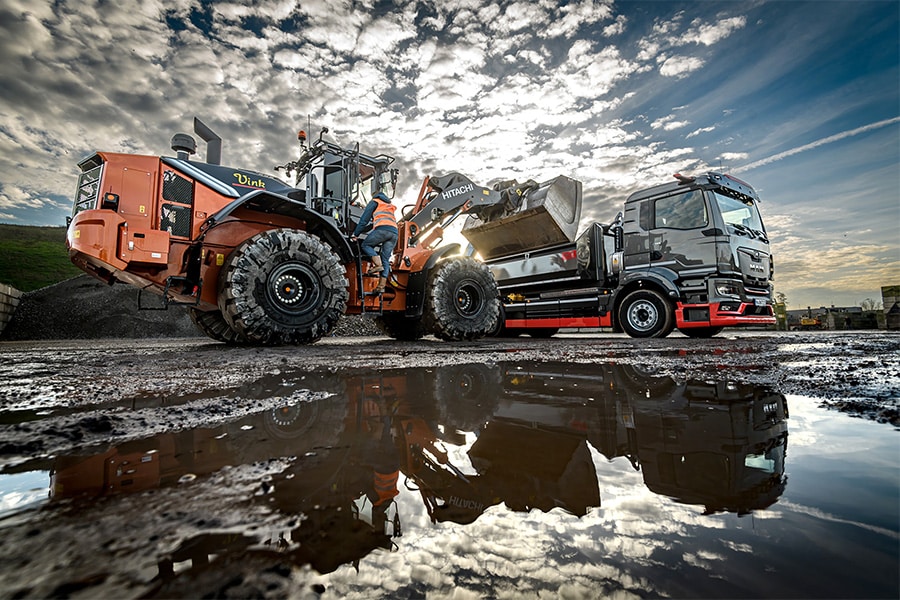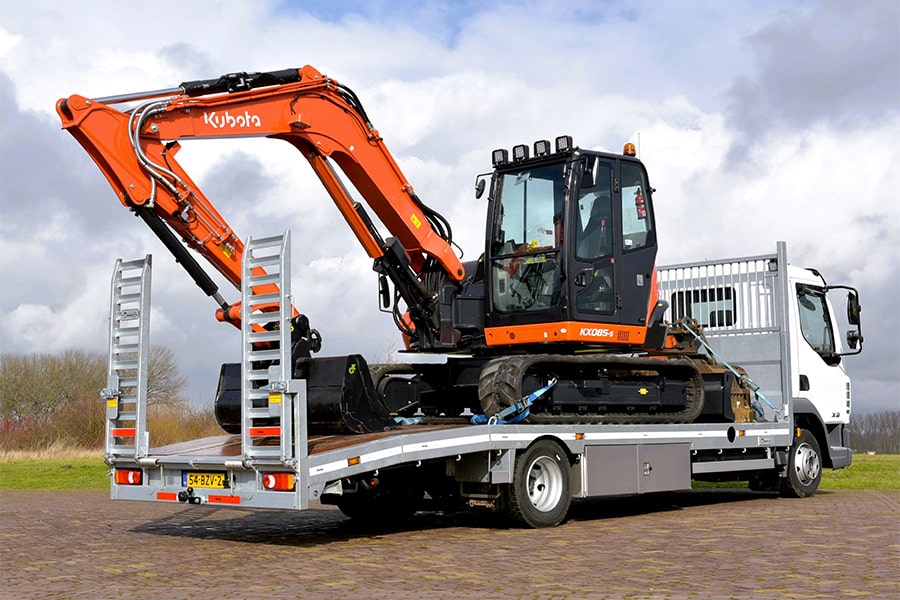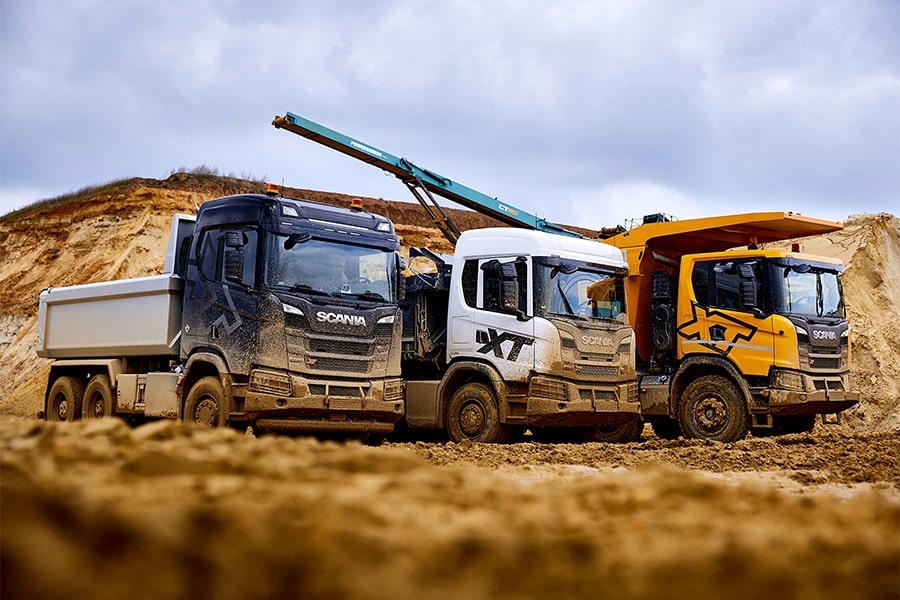
Reliable partner for toughest conditions
Robust workhorse for demanding construction industry
On the Scania Nederland lot during the TKD trade fair, the spotlight is emphatically on the XT as a diligent worker within the construction industry. For this robust model - literally and figuratively - no bridge is too far.
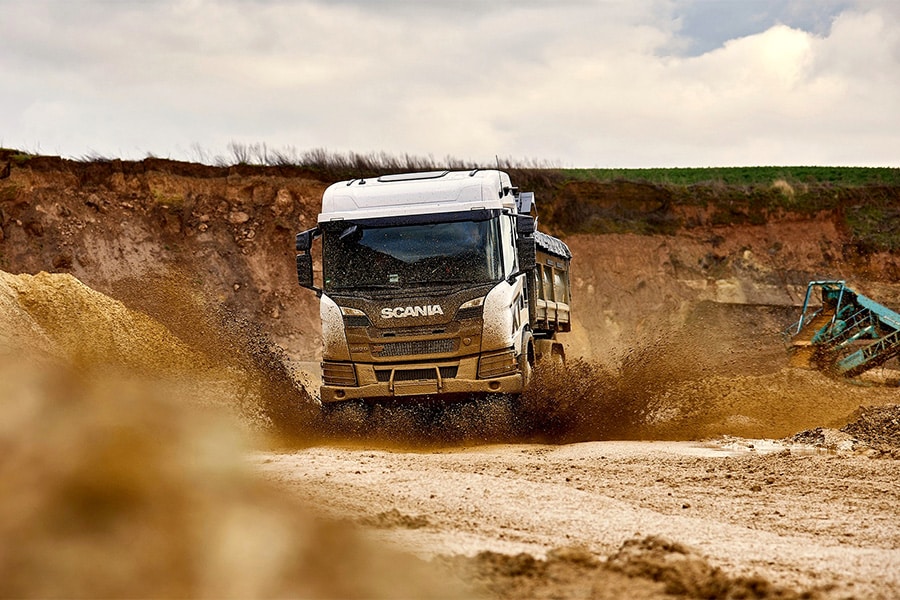
The Scania XT, which can be chosen with all cab versions and engines, is designed for the toughest jobs and challenging conditions. A tough bumper protrudes 150 mm at the front of the cab. It gives the vehicle a characteristic appearance, exuding both strength and robustness. This is further accentuated by mirror caps that can take a beating. In addition, customers can choose from numerous trim options that contribute to greater productivity and reinforce the impression of unyielding strength.
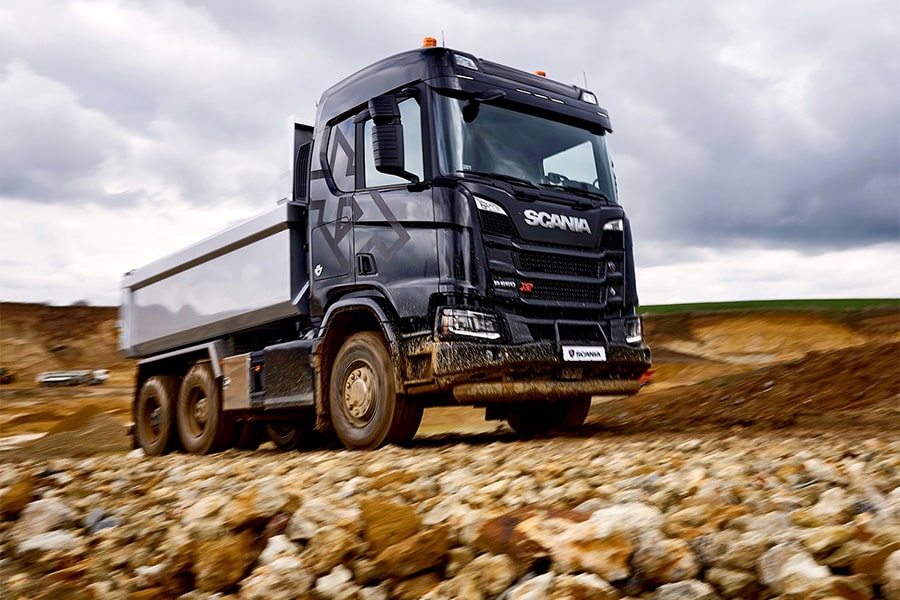
Against a bump
The bumper offers an approach angle of about 25 degrees, depending on the version in terms of tire choice and chassis. Combined with a protective plate and headlight guard, the XT version has a particularly robust and strong front end, which can easily withstand a bump or light touch without sustaining damage to the underlying structure. In the center is an accessible 40-ton capacity tow bar, which is welcome when the truck needs to unload another vehicle or needs assistance itself when it is fully loaded.
"Scania's XT series is intended as a construction vehicle in different versions for a variety of applications. This model is often used under the toughest conditions, both on the road and in rough terrain," said Jan de Vries, Director Sales at Scania Netherlands. "The situations in which they offer solutions range from poor roads to cramped construction sites, with the emphasis invariably on the tough conditions the vehicle must be able to withstand. A few scratches don't mean an immediate visit to the garage in this regard."

Modular system
While construction vehicles in various applications are initially the most obvious XT candidates, Scania's modular systems also offer plenty of potential for customizing a solution. Two equipment packages unique to the XT can be added to the basic design if desired, namely an interior package and an exterior package. This allows the customer to tailor the truck even more individually to its arduous task in construction.
Scania is also unique in the plug-and-play way in which different bodywork and body electronics can be integrated into one's own vehicle system. The time-consuming pulling of proprietary cables can thus be avoided. Apart from developing and facilitating the implementation of bodybuilding for the trucks themselves, Scania also focuses on information and training. One maintains a comprehensive website with useful information and drawings.
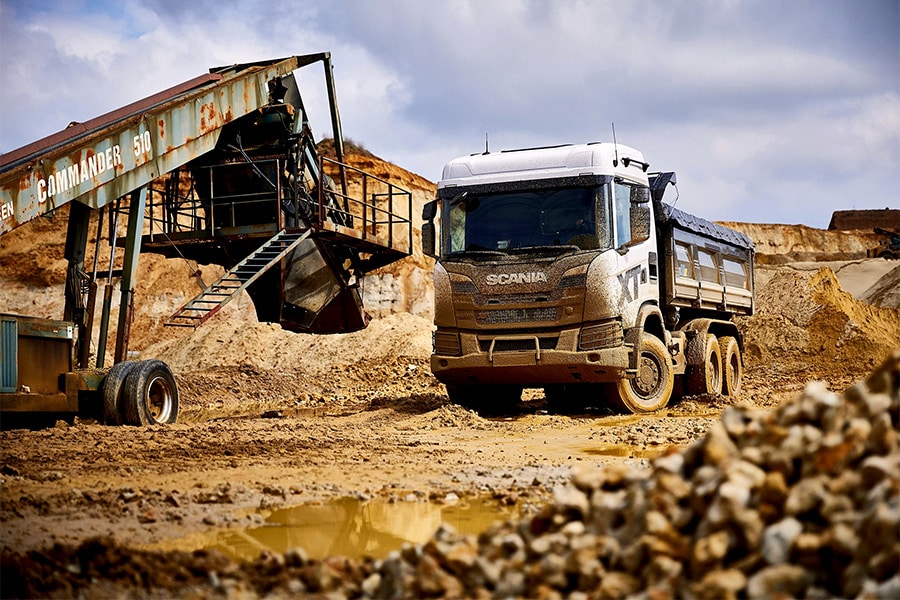
Strong and economical
Of course, the range of choices does not stop at the options in terms of axle designs and cabs. The range of engines is also extremely large. This range goes from the proven 7- or 9-liter engines, via the 13-liter power units of the Super platform to Scania's mighty V8 with outputs of up to 770 hp and torque of no less than 3,700 Nm. All engines are SCR-only and therefore very economical. This is not only good for the wallet, but also beneficial for the environment. After all, fuel consumption is directly linked to CO2 emissions. Scania Opticruise, the automated driveline system, has a special off-road mode for even more off-road capability.
Tenders increasingly include requirements regarding emissions on a project. These requirements can extend to a completely emission-free deployment of (logistics) equipment on the construction site. This often means that the site can only be reached by zero emission vehicles. Scania has a full range of electric vehicles suitable for different applications. The chassis are modular, allowing great flexibility. An e-PTO can be used to power emission-free additional equipment. Also, many bodybuilders are now trained in working with a Scania e-truck.

